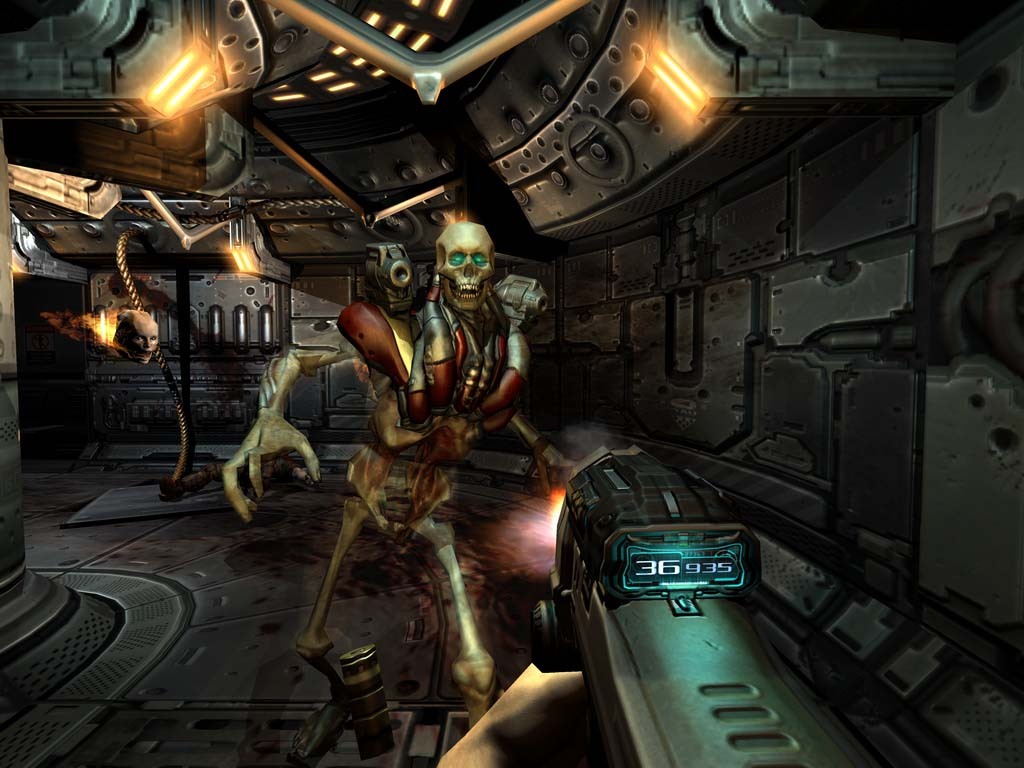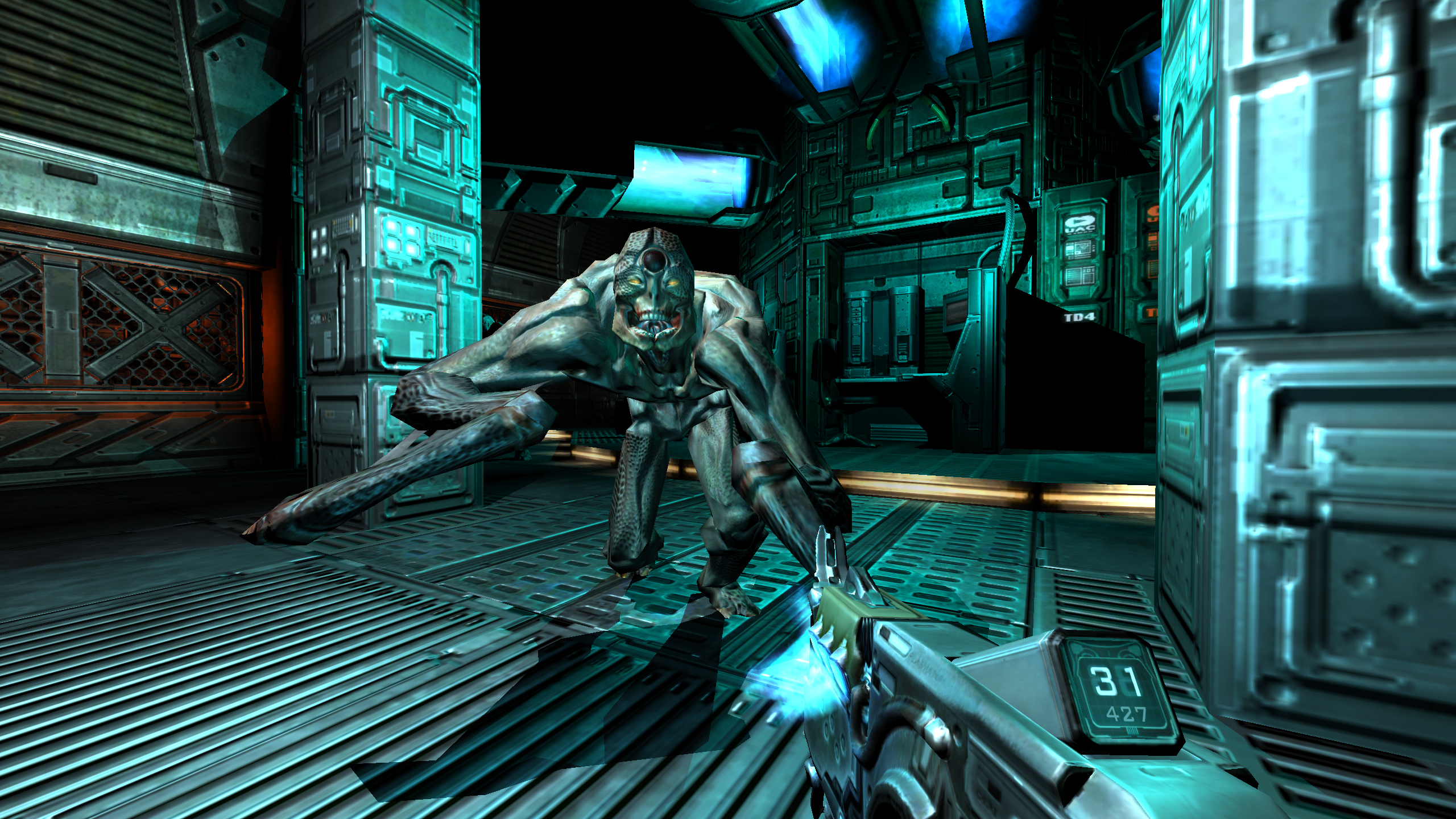The Legend of Zelda: A Link to the Past is #1. Super Mario Bros. 3 is #2. Tetris is #3.
Call of Duty 4: Modern Warfare is #7.
DOOM is #13.Quake 3: Arena is #114.
Goddamn Casuals.
Sunday, April 8, 2018
Saturday, April 7, 2018
Doom 3 is a great DOOM game
 |
| DOOM3 cover, image stolen from Wikimedia |
DOOM3 was generally panned on its release by players who believed that it did not live up to its hype. They criticized its focus on horror elements, slower paced gameplay, and the perception that it copied trends of more modern, console shooters. The biggest complaint was that it did not "feel like a Doom game." Eventually a group of fans came to like DOOM3, or maybe they just said they did to hate on Doom 3: BFG Edition when it came out. Regardless, they are both wrong. DOOM3 is a hardcore game in the tradition of id Software's previous games, and a worthy installment of the DOOM franchise.
 |
| DOOM |
In DOOM II the power fantasy is expanded a bit. Now the focus is the player as one man against the entire Army of Hell. The enemy count went up, the enemies that could be rendered and active onscreen went up, the enemy variety went up, and the protagonist's armory was expanded. Many levels of DOOM II focus on the mayhem of battle and of using your powerful arsenal to overcome the hordes.
 | |
| Quake |
Quake is the most similar to DOOM. It's also the last game where John Romero and John Carmack collaborated together, and arguably the last game from the original id Software team. Quake returns to the horror focus of DOOM, this time in a dark world inspired by H.P. Lovecraft literature where you play another fish-out-of-water type human trying to survive against the monsters skulking in the shadows.
Mostly, the low enemy counts in DOOM and Quake were a result of the technical limitations of PCs at the time. Quake made the jump to full 3D and most common PCs couldn't handle too much 3D rendering at the time. If you, the customer, bought a pricey graphics card you could enjoy hardware acceleration and better visuals (which were sadly out of reach for my young self). DOOM on its original launch faced much the same problem - id had built the technology from the ground up and didn't know how far they could push systems. DOOM II squeezed as much power as they could from the hardware they had at the time.
Famously, Hideo Kojima was faced with the low power of the MSX system, and resolved it by creating Metal Gear, an action game focused on stealth, due to low onscreen enemy count.
 | |
| DOOM 3, screenshot stolen from STEAM |
Which brings us back to DOOM3. The game has low onscreen enemy count, a focus on horror and exploration of dark, maze like levels. Sounds a lot like the original DOOM and Quake, right?
However, in 2004 games were running on much more powerful hardware. Gamers had become used to seeing hordes of enemies on screen, like in Serious Sam, lots of action and extremely fast movement speeds, like in Quake 3.
I think when players talk about the "feel" of a Doom game, they refer to not the base game, but the mods of DOOM II. Mods like Brutal Doom and Project Brutality, which put hundreds if not thousands of enemies onscreen at a time, tons of blood and gore effects, multiple crazy weapons, and brutal killing moves and finishers. This is the style of gameplay that the reboot DOOM (2016) followed to near universal acclaim.
The last major complaint most players have of DOOM3 are the so-called "jump scares", or enemy ambushes that comprise almost every encounter in the game. Quake did this a lot as well, though no one seems to remember, where you would walk to a certain point and an invisible trigger would spawn monsters behind, above and around you. I didn't like it in Quake and I don't like it in DOOM3. DOOM and DOOM II, by virtue of technological limitations, did not use this technique, though they had plenty of "monster closets", rooms with hidden doors that would open and let out monsters once the players pulled the appropriate switch. I much prefer fixed enemy placements, and sadly DOOM3 had none.
 |
| Doom 3: BFG Edition, image stolen from GOG.com |
DOOM3 on its own merits is an amazing game. The gunplay is tight and responsive, the weapons are all unique and useful, the enemies while not smart are challenging due to their placement in the level, and with some tactical knowledge and forethought, are able to be overcome flawlessly. The level design of DOOM, DOOM II and Quake are God-tier, and while DOOM3 is not quite as good it is still far better than the standard corridor shooter FPS level design, or the static attack and defense lines of the Call of Duty series.
I have recently been on a marathon of shooter games, and focused on id software games since I never seriously played them while younger - I played maybe the first few levels of all of them, and that was it. It has been a refreshing and eye-opening experience, and judged from this perspective DOOM3 is very much like its predecessors and a very enjoyable game in its own right. It has some very tangible flaws and is not the perfect shooter, but is not a bad game by any means and was unfairly derided upon release. As FPS games go, you can do quite worse than DOOM 3.
Subscribe to:
Posts (Atom)
I like OSRIC’s character sheet, and even though it’s missing some important fields for AD&D 1e and feels more like a B/X sheet, it’s st...
-
The DM of a group I was playing in wanted to switch over to Original Dungeons and Dragons, and shared this PDF of the 3LBBs compiled into o...
-
They're the same. The BE of BECMI is identical to B/X, intentionally so, as some passages are lifted word-for-word. There are a few mino...
-
From RPG site forums USC professor, occasional novelist, and (apparently) D&D fan Dr. J. Eric Holmes, as legend has it, took the OD&...